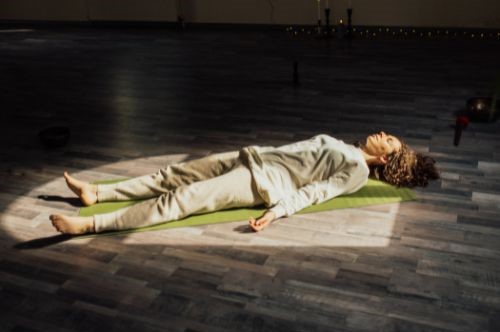
You CAN stop panic attacks, even when it feels impossible. Panic attacks come crashing over you with no warning. One moment, you feel normal, and the next, your body is in full-on survival mode. Your heart races and feels like it is going to explode put of your chest, you feel like you can’t breathe enough air and your mind spirals. It is an intensely overwhelming experience, like you are completely losing control. You have a sense of impending doom. You feel sure that something is wrong, it literally feels like you are having a heart attack. Even if you rationally know you’re not in real danger, your brain doesn’t care. The fear is real, and it is gripping you.
If you ever experienced them, this will resonate with you. You are not alone, you are not broken, you are not weak. You are a human and your nervous system is simply overreacting. And you can regain control.
Here are some proven techniques to stop a panic attack. Yes, even when it feels impossible. These are tested methods that work, and I will help you understand why they work, so you can trust them even when panic tells you otherwise. Let’s get started.
1. DO THIS FIRST: STOP FIGHTING IT & ACKNOWLEDGE IT
One of the biggest mistakes people make is trying to fight a panic attack. Panic attacks thrive on confusion and fear. In other words, you panic that you are panicking. Instead of resisting, acknowledge and accept this is happening. Always remember that a panic attack cannot hurt you. It feels terrifying, but it will pass.
Say to yourself:
“This is a panic attack. My body is reacting to fear, but I am safe.”
By naming it, you shift from feeling helpless to taking control. The act of naming the panic triggers activity in the prefrontal cortex, which can dampen the overactive amygdala and decrease the intensity of the fear response. This leaves you in a much better position to take the steps to stop it.
Here are the traditional tried and tested techniques to stop panic attacks fast:
2. THE 5-4-3-2-1 GROUNDING TECHNIQUE
When panic takes over, your thoughts become a runaway train. This method forces your brain to focus on the present.
5 – Name five things you can see.
4 – Identify four things you can hear.
3 – Touch three things near you.
2 – Recognize two smells around you.
1 – Say one thing you can taste.
Why it works:
It works by shifting your brain’s focus away from the amygdala (the fear center) to the sensory processing networks in the brain. Engaging your senses activates the prefrontal cortex, which is responsible for rational thinking and awareness, making it harder for the brain to stay in panic mode. This shift helps calm the nervous system, bringing the body back to a state of balance and stopping the panic attack.

3. BOX BREATHING (THE NAVY SEALS’ SECRET TO STAYING CALM)
During a panic attack, your breathing becomes rapid and shallow, making symptoms worse. Box breathing is a simple yet powerful technique used by Navy SEALs to quickly reset your nervous system and stop a panic attack in its tracks. Here’s how to do it:
1. Breathe in for 4 seconds
2. Hold for 4 seconds
3. Exhale for 4 seconds
4. Hold for 4 seconds
Repeat 4 times.
Why it works:
Box breathing works by slowing down your breathing, which sends a message to your brain that you are safe. It activates the vagus nerve, which calms your nervous system, lowers your heart rate, and stops the panic response. By controlling your breath, you shift your brain out of fight-or-flight mode and into a state of balance.

4. DO MATHS: COUNT BACKWARD FROM 100 IN SEVENS (COGNITIVE OVERLOAD TRICK TO STOP PANIC ATTACKS)
Your brain can’t panic and do complex math at the same time. Give it something difficult to focus on:
Count backward from 100 in 7s (100, 93, 86, 79… etc.).
Repeat until you feel your mind calming down.
Why it works:
Counting backward in sevens works because it forces your brain to switch from the fear center (amygdala) to the logical thinking center (prefrontal cortex). Since your brain can’t focus on both panic and complex math at the same time, this interrupts the panic cycle and helps you regain control. And if you start doubting your math skills halfway through, congratulations, you’re officially too focused to panic!

When nothing else works: Try these instant nervous system resets to stop panic attacks (they don’t involve thinking):
Sometimes, once a panic attack starts, it can feel like it has a life of its own, making it incredibly hard to apply techniques in the moment. If you feel too overwhelmed to do grounding exercises or deep breathing, these alternative approaches will really help because they don’t involve ‘thinking’ and work wonders to stop a panic attack even when you feel powerless:
5. THE BUTTERFLY HUG (INSTANT ANXIETY RELIEF)
This is a simple and extremely effective self-soothing technique that can bring instant relief and stop panic attacks.
Cross your arms over your chest.
Tap one hand at a time on your upper arms, like butterfly wings.
Keep going for 30 seconds to 1 minute.
Why it works:
This technique is called bilateral stimulation; it instantly soothes the nervous system by activating both hemispheres of the brain, promoting emotional regulation and reducing anxiety. It also engages the vagus nerve, which signals the body to relax by slowing the heart rate and breathing, and shifts from fight-or-flight to a state of calm. This process tells the brain that you are safe, so the brain activates ‘calm mode’, effectively easing panic.

6. GRAB SOMETHING REALLY COLD (SHOCK YOUR NERVOUS SYSTEM BACK TO CALM)
Cold exposure can instantly interrupt a panic attack. If your mind is spiralling and you can’t focus on anything else, try this:
Hold an ice cube in your hand or press it against your wrist.
Splash cold water on your face.
Run your hands under freezing water.
Why it works:
Cold exposure activates the mammalian dive reflex, a built-in survival response that slows your heart rate and tells your nervous system to calm down. It triggers the parasympathertic nervous system (your body’s calming system), which slows your heart rate, lowers your blood pressure and shifts your body out of panic mode instantly.

7. SIT DOWN & GO LIMP (REDUCE ADRENALINE)
When the anxiety attack kicks in, your body floods with adrenaline, making your muscles tense.
Instead of feeding the tension:
Sit or lie down and consciously go limp.
Let your arms, shoulders, and legs feel heavy.
Imagine yourself melting into the surface beneath you.
Why it works:
Sitting down and going limp works because it tells your nervous system that there is no real danger. When you relax your muscles, your brain stops releasing adrenaline, which is the hormone fueling your panic. This triggers the parasympathetic nervous system, slowing your heart rate and breathing, helping you shift out of ‘fight or flight’ mode.

8. MOVE! (SHAKE OFF THE ADRENALINE TO STOP THE PANIC ATTACK)
Walk around.
Shake your arms and legs.
Dance for 30 seconds.
Why it works:
Moving works because adrenaline builds up in your body during panic, preparing you to fight or run. If you don’t use that energy, it lingers, keeping you stuck in panic mode. Walking, shaking, or dancing burns off the excess adrenaline, signals to your brain that the threat is over, and activates the parasympathetic nervous system, helping you calm down faster.

CONFUSED? HERE’S WHEN TO GO LIMP AND WHEN TO MOVE:
Confused on why the above two techniques seem contradictory? I’m so glad you asked!
While going limp and moving seem opposite, they actually serve different purposes in stopping a panic attack, depending on what your body needs in the moment.
Going limp works best if your body feels frozen or tense because it signals to your brain that there’s no danger, reducing adrenaline production.
Moving/shaking It off works best if you feel restless, jittery, or overwhelmed with energy because it helps burn off excess adrenaline that’s fueling the panic.
Which One to Choose?
If you feel paralyzed or stiff: try going limp.
If you feel wired and agitated: try movement.
Both techniques work with your nervous system, just in different ways!
9. HUM OR SING (INSTANT VAGUS NERVE ACTIVATION)
Panic attacks trigger your sympathetic nervous system (fight-or-flight). One of the fastest ways to switch back to calm mode? Activate the vagus nerve, which controls your relaxation response.
Hum, sing, or chant “om” for 30 seconds.
Breathe out while making a deep humming sound (e.g., “mmmmmmm”).
Why it works:
Humming or singing activates the vagus nerve, which is like a built-in calm button for your nervous system. The vibrations from your voice stimulate the vagus nerve, sending signals to slow your heart rate, relax your breathing, and shifts your body out of panic mode.

TAKE BACK CONTROL FROM PANIC
Panic attacks can feel overwhelming, but you always have the power to stop them. The key is to interrupt the fight-or-flight response (sympathetic nervous system) and activate the calming parasympathetic system. The techniques we’ve covered, such as cold exposure, deep breathing, humming, movement, and grounding, work because they use the body rather than the mind. When panic takes over, thinking your way out of it can feel impossible, but these simple physical actions send direct signals to your brain that you are safe, forcing it to calm down instantly. This is why these techniques are so effective to stop panic attacks.
Remember, no matter how intense they feel in the moment, panic attacks cannot harm you, and you are always in control, even when it doesn’t feel like it. The more you practice these techniques, the easier it will become to short-circuit panic before it takes hold.
HEALING THE ROOT CAUSE OF PANIC ATTACKS AND BUILDING RESILIENCE
That said, while these tools provide immediate relief, the true path to long-term freedom from panic attacks is understanding and addressing the root cause. Rather than stop panic attacks, you can prevent them altogether. Consider this part of your personal development journey; exploring your triggers, healing past experiences, and building resilience so that panic attacks no longer need to occur. You could start with a simple regular meditation practice, click here for a simple guide on how to get started. And here for a guide on how to find happiness with small daily practices. You deserve a life where anxiety doesn’t control you, and with the right mindset and tools, that life is 100% possible for you.
SHARE WITH A FRIEND